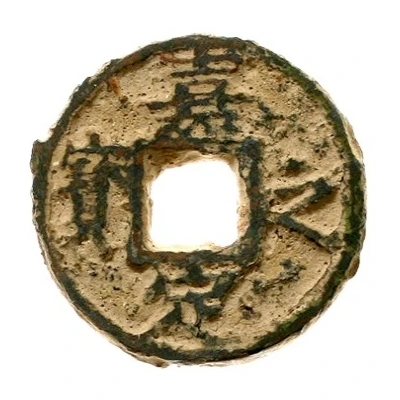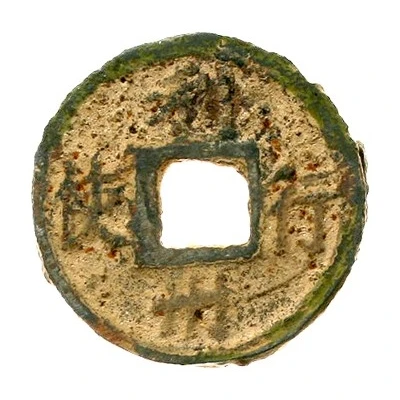2 Cash - Jiading Zhengbao; iron ND
| Iron | - | 29 mm |
| Issuer | Empire of China |
|---|---|
| Emperor | Southern Song dynasty › Ningzong (宋寧宗) (1194-1224) |
| Type | Circulating commemorative coin |
| Years | 1208-1224 |
| Value | 2 Cash |
| Currency | Cash (621-1912) |
| Composition | Iron |
| Diameter | 29 mm |
| Shape | Round with a square hole |
| Technique | Cast |
| Orientation | Medal alignment ↑↑ |
| Demonetized | Yes |
| Updated | 2024-10-03 |
| Numista | N#220070 |
|---|---|
| Rarity index | 100% |
Reverse
One crescent with one dot above.
Edge
Plain
Comment
During the Jiading era, in addition to the regular Tongbao, Yuanbao, and Zhongbao coins, various other currency names are used:- 安寶 (Anbao; peaceful currency)
- 崇寶 (Chongbao; noble currency)
- 大寶 (Dabao; large currency)
- 封寶 (Fengbao; honoured currency)
- 洪寶 (Hongbao; great currency)
- 隆寶 (Longbao; eminent currency)
- 泉寶 (Quanbao; type 1; wealthy currency)
- 全寶 (Quanbao; type 2; perfect currency)
- 万寶 (Wanbao; uncountable currency)
- 新寶 (Xinbao; new currency)
- 興寶 (Xingbao; prosperous currency)
- 永寶 (Yongbao; everlasting currency)
- 真寶 (Zhenbao; type 1; true currency)
- 珍寶 (Zhenbao; type 2; precious currency)
- 正寶 (Zhengbao; orthodox currency)
- 至寶 (Zhibao; type 1; best currency)
- 之寶 (Zhibao; type 2; the currency)
These all appear to be from mints in Sichuan; however, the exact purpose of these pieces (collectively known as the substitution series) is uncertain.
One possible theory is that, because the Jiading era lasted 24 years and there are exactly 24 coin in this series, a different currency name was used each year.
Interesting fact
One interesting fact about the Jiading (Zhengbao; iron) ND (1208-1224) circulating commemorative coin from the Empire of China made of Iron is that it was produced during the reign of Emperor Ningzong of the Southern Song dynasty, who ruled from 1194 to 1224. This coin was minted as a means of commemorating the emperor's military campaigns and victories, and it features an inscription on the reverse side that reads "Zhengbao," which means "Victory Treasure." The use of iron in the production of this coin was significant because it was a departure from the traditional use of copper or bronze in Chinese coinage, and it reflected the emperor's desire to showcase the empire's military strength and power.

